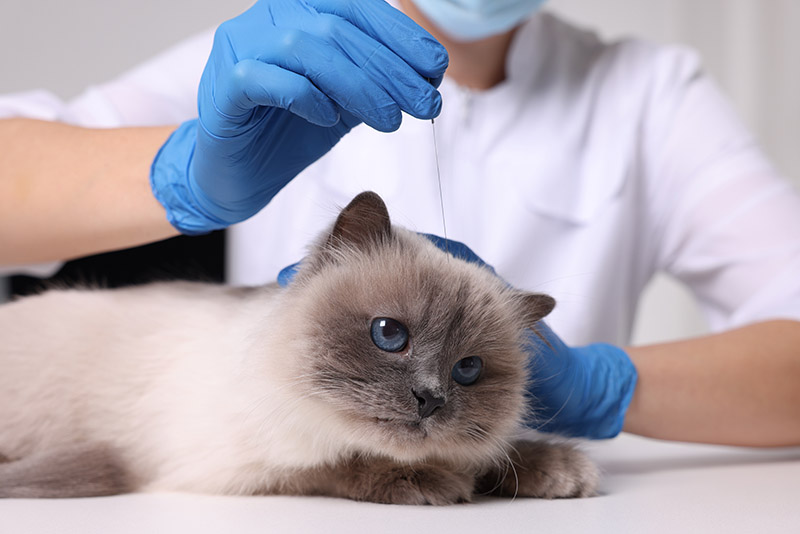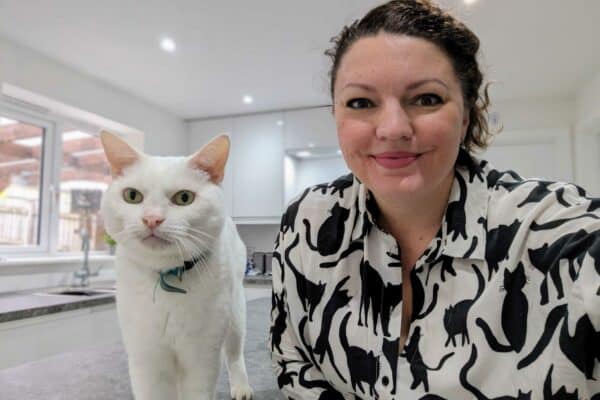Click to Skip Ahead
Acupuncture has long been recognized as originating in China approximately 3,000 years ago, but it may have been around even longer. In 1991, the oldest known glacier mummy, known affectionately as Otzi, was uncovered in the Italian Alps with his remains remarkably well-preserved thanks to the ice in which he was found1. Much has been learned from Otzi, who lived and died over 5,300 years ago, including some very interesting tattoo markings that archeologists believe formed part of a needling treatment.
Until recently, acupuncture has been treated with disdain and suspicion amongst practitioners of modern medicine, but the undeniable therapeutic effects of this ancient technique are starting to be recognized and respected. With very few risks and many potential benefits, it’s not surprising that many humans are exploring acupuncture to treat a number of ailments. But did you know that cats can also benefit from this prehistoric practice?

What Is Acupuncture?
You might have heard the term “dry needling”’ when people talk about acupuncture, particularly when describing the use of acupuncture needles to specifically treat painful areas of the body. The word “acupuncture” is often reserved for the ancient Chinese technique that charts different lines or “meridians” across the body, with certain sites on the body’s surface having a therapeutic link to internal structures.
From a technical standpoint, dry needling simply refers to needling the skin without injecting a substance, so acupuncture is one specific type of dry needling. Therefore, all acupuncture is dry needling, but not all dry needling is acupuncture.
A lot of the time, however, we use a combination of both.
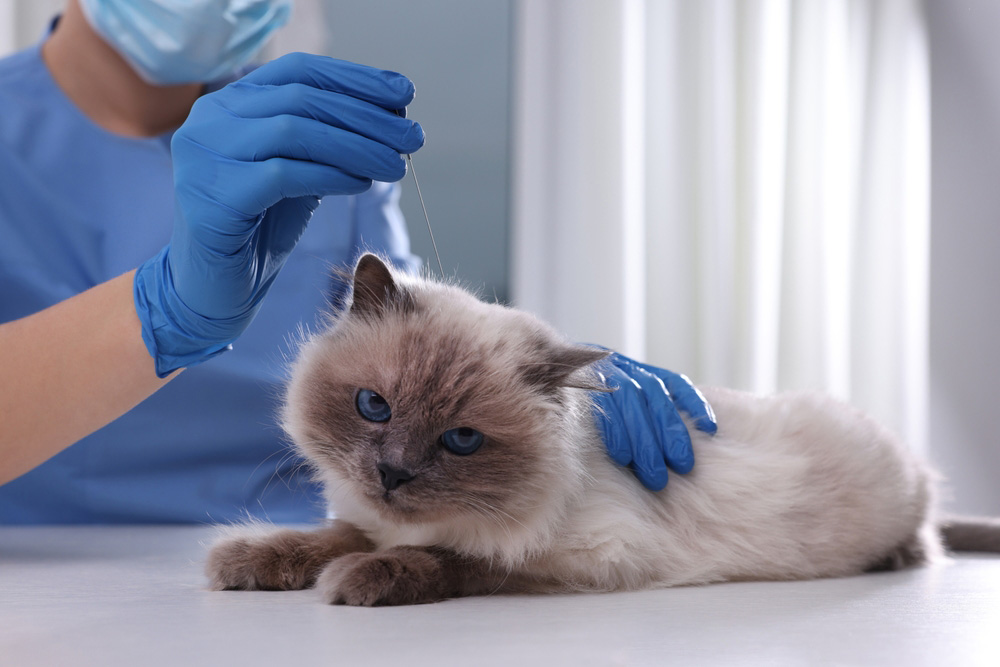
A Brief History of Acupuncture
Around 300 BCE, the Chinese emperor, Huangdi, wrote a book that has been translated into The Yellow Emperor’s Classic of Internal Medicine2. The information and ideas contained within formed the basis of Taoist philosophy, with emphasis on the balance between yin and yang and the way in which Earth’s five elements (water, fire, earth, metal, and wood) impact the human body. These life forces were referred to as Qi (pronounced “chee”), and it was believed that illness was the result of blocked Qi in the body. Acupuncture was a way of unblocking the flow of Qi, improving health, and treating illness.
They found that needles placed in certain locations had beneficial reactions in corresponding parts of the body, which they mapped to create “meridians.” There are 12 different meridians that run the length of the body, from head to toe, head to hand, heart to toe, and heart to hand.
Ancient Wisdom Meets Modern Science
What the ancient practitioners likely didn’t realize at the time was that these meridians almost certainly have their origins in embryological development. There is a stage in early vertebrate embryo development, called gastrulation, when the three primary cell types emerge.
- Endoderm – Becomes the gastrointestinal, respiratory, urinary, and endocrine (hormonal) systems.
- Ectoderm – Becomes the skin and nervous system.
- Mesoderm – Gives rise to the spine, skeleton, cartilage, skeletal muscles, kidneys, and blood.
When you see how and where the different structures start out, it’s easier to understand why placing a needle in a shoulder may well have a corresponding effect on the intestines.
Traditional acupuncture focuses on points along the meridians to indirectly treat different parts of the body, and this technique can also be used in cats. Most of the time, however, we are using a more direct approach.
How Does Acupuncture Work?
Have you ever had a knot in your muscles? They’re painful and you often flinch when they’re pushed, but it also feels amazing when you (or someone else) puts pressure on them. These are trigger points, or tight bands of inflamed muscle and connective tissue that form under pressure. In some places, like our shoulders, they’re quite easy to feel. In other locations, all you can feel is a sore, tender area.
We know how good it can feel to massage or rub these areas, and the reason for that is that this pressure stimulates nerve growth factors that can help repair damaged tissue, as well as having indirect effects on surrounding tissues.
When we target those same areas with an acupuncture needle, it’s like we’re massaging the painful areas with pinpoint accuracy, meaning that we need less pressure to achieve a greater result. Sometimes, these trigger points line up with acupuncture points, which intensifies the response.
The needles used are so tiny that the patient rarely feels anything more than some light pressure but often feels nothing at all. Occasionally, a trigger point is too painful to needle directly, and that’s where we can focus on tender points or use acupuncture points and other recognized locations to treat the pain from further away.
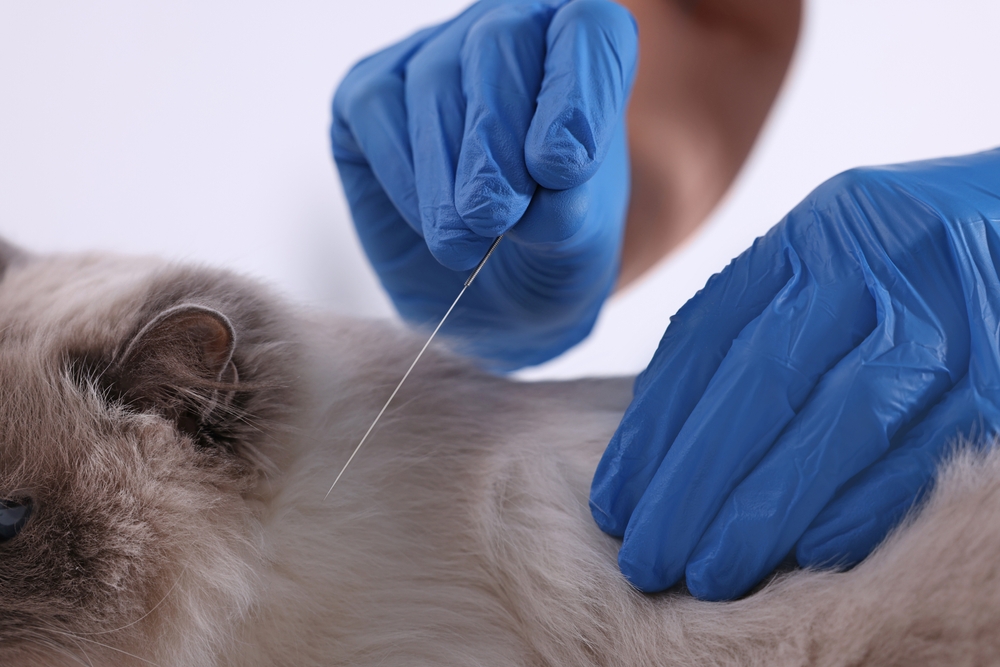
Can You Use Acupuncture on Cats?
You might be thinking that there is no chance that anyone is going to be able to start placing needles all over your favorite feline, but the surprising thing is that cats often make better acupuncture patients than dogs, and it’s not unusual for a cat to purr themselves to sleep during a treatment session.
Of course, there are limitations to where we can safely place needles in cats due to their anatomy and tolerance of being moved around, but if your cat can sit or lie still for 10–15 minutes, they can certainly enjoy the therapeutic benefits of acupuncture.
Every cat is different, and some will quite happily lie still and allow many needles to be placed, while others may only allow brief sessions with one or two needles at a time. Either way, more cats will be amenable to this type of treatment than you might think.
Advantages of Acupuncture for Cats
Acupuncture may be used to treat a variety of feline conditions, including:
- Soft tissue injury
- Osteoarthritis
- Neurological disorders
- Gastrointestinal, respiratory, and urogenital problems
- Stress
- Wound healing
One of the main benefits of using acupuncture to treat feline illness is that it comes with minimal risks and side effects and has no drug interactions to be worried about. The biggest downside to feline acupuncture is that not all cats will tolerate it or will only tolerate a limited amount.
Who Can Perform Acupuncture on Cats?
In most states, only qualified veterinarians who have completed additional training by an authority recognized by the American Academy of Veterinary Acupuncture can perform acupuncture on animals.
Some vets are not familiar with or may be resistant to the use of acupuncture for cats, so you may need to ask about referral options or look further afield to find a veterinarian qualified in veterinary acupuncture.
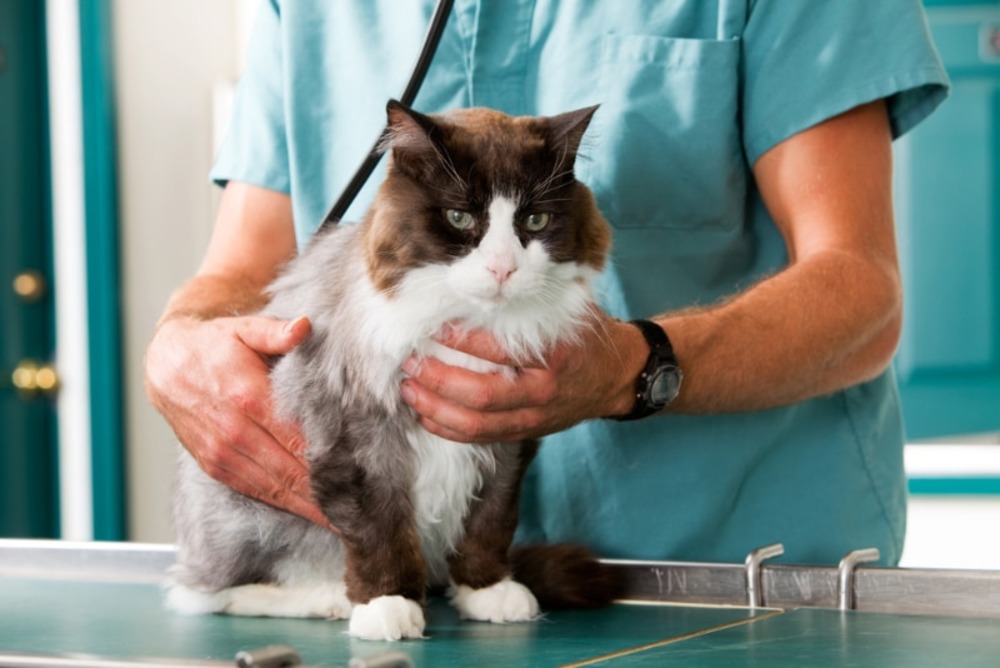
Disadvantages of Acupuncture for Cats
There are very few side effects to acupuncture, which is why it appeals to so many people and pet owners, but there are a few things to be aware of.
- Pneumothorax: Although small, there is a risk that an acupuncture needle could pierce the lung and cause a life-threatening pneumothorax (collapsed lung).
- Skin irritation/bleeding: Some individuals may have a local reaction to the needles, causing itching and redness (rare), and there may be a small amount of bleeding at the site (rarely noticed).
- Pain: The stimulation from the needles can sometimes result in pain and tenderness, though this is usually short-lived.
- Lethargy: It is quite common for patients to feel quite tired and sluggish the day after treatment.
- Ingested needle: If a needle is lost or becomes stuck in the fur, it could be accidentally ingested when the cat is grooming. The needles do not have a cutting edge, so the risk of significant internal trauma is low.
Acupuncture Is Not a Replacement
Acupuncture falls under the category of complementary medicine, which means that it is designed to be used alongside, and enhance the results of, clinical veterinary medicine. Although acupuncture may provide some measurable benefits for a range of illnesses and injuries, it is not recognized as a primary treatment method. It is, however, worth exploring if your cat is unable to take certain medications, or as an additional treatment option.

Final Thoughts
Acupuncture, or dry needling, has been used for thousands of years to treat myriad illnesses and injuries. Over the last 50 years, it has started to be recognized and embraced by the Western medical community. With many potential benefits and very few potential risks, acupuncture is also becoming more popular in veterinary medicine. Although not every cat will be amenable to this ancient practice, it is better tolerated than most people would imagine.
While we do not recommend using acupuncture as a sole treatment method, its potential for managing pain, relieving stress, and improving disease management, makes it an option well worth exploring.
Featured Image Credit: New Africa, Shutterstock

